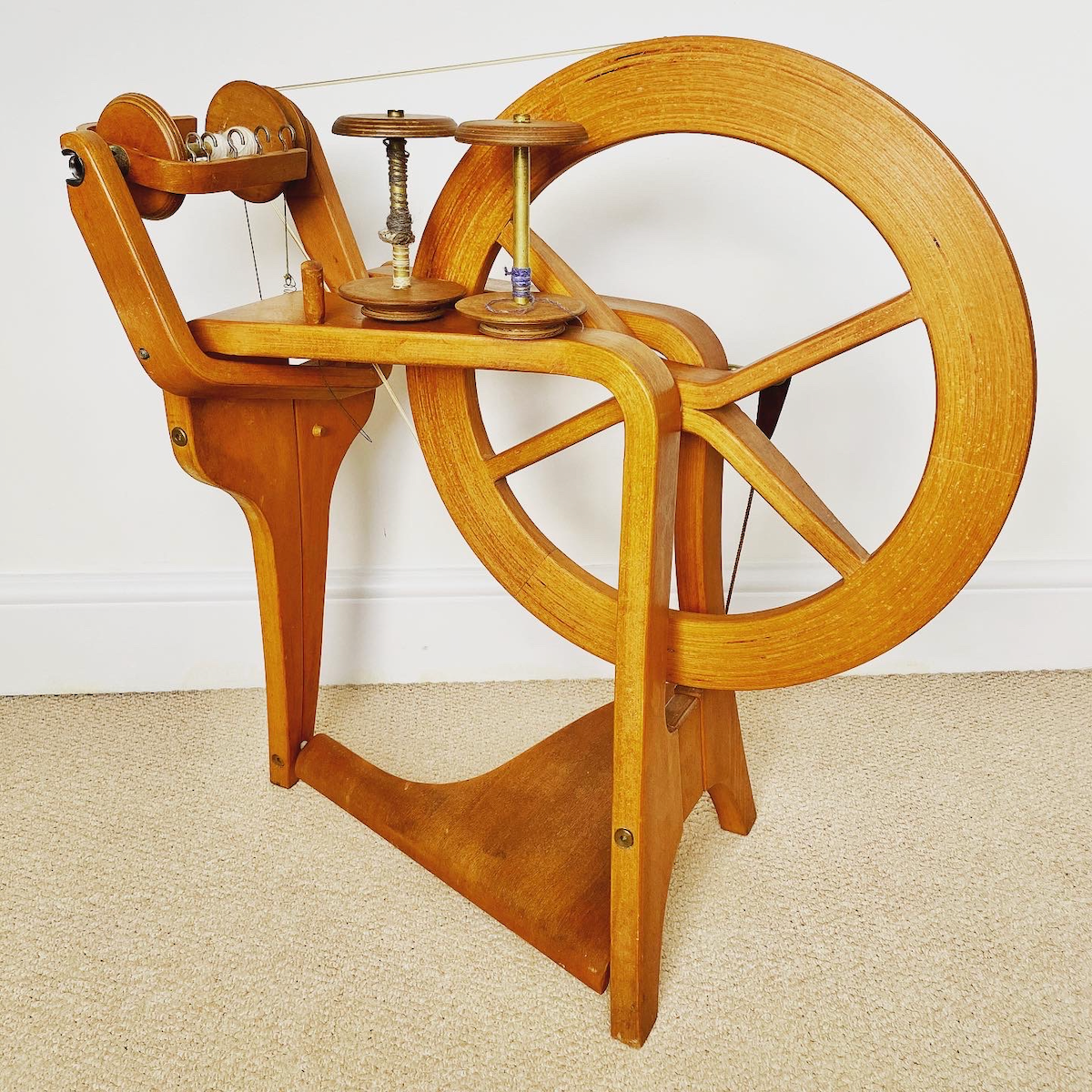The Herring Spinning Wheel
Or why spinning wheel aesthetics can sometimes win out over practicality!
When I was thinking about how to furnish my house, I realised just how attracted I am to mid-century furniture. Not the pseudo-mid-century hairpin-legged, Pinterest-able IKEA hacks, but the original designs of the 1940s-1970s. There's an element of this which must come down to nostalgia because it reminds me of furniture my grandparents owned, but it's also just so practical for my home. The teak GPlan sideboard hides a hideous birds nest of network cables and plugs on one side (cable-tied to within an inch of their lives, but a mess none the less) and knitting projects in progress on the other, while the middle drawers hold cutlery and cat toys... separately, of course. The Ercol serving cabinet, originally a fancy place to carve the Sunday roast, now functions as a desk where I can keep all the important documents and computer cables out of reach from curious cats. The customisable Ladderax units give me flexible storage without making the room feel crowded and cluttered with bookshelves. These and many other furniture makers of the mid-century used a fine balance of centuries-old cabinetry techniques and the latest technology to achieve simple, clean designs which have stood the test of time.
In 1942, icons of midcentury design Charles and Ray Eames developed their first commercial formed plywood products. Not furniture, but 150,000 leg splints used to treat soldiers. The ply was resin bonded and shaped using heat and pressure and the sale of these splints allowed Charles to quit his day job and start making furniture. In 1945, Eames debuted the LCW (Lounge Chair, Wood) and later the DCW (Dining Chair, Wood).
So "what does this have to do with spinning wheels," you may well ask. Well, there's a British spinning wheel that's always held a certain fascination for me and that's The Herring. Frank Herring is a family-run arts and crafts shop that opened in the 1930s in Dorchester. By the 1980s they had been importing spinning wheels for years but they identified a market for a British spinning wheel and assembled a team of designers, engineers and manufacturers to create The Herring spinning wheel, introduced in 1983. The use of moulded, laminated beech in almost every component is strikingly similar to the Eames LCW but of course with a completely different function. Its design was considered so aesthetically pleasing it won a London Design Centre award. Over the years, around 1000 were made until it was discontinued in 2015. They also made the Alpha, a curious metal-framed folding wheel, but the plywood Herring holds a special attraction for me.
In October 2019 I finally gave in and decided to track one down. As is so often the case, putting the word around in the spinning community soon paid off and I had three on offer, one of which was just on the other side of Dartmoor so naturally that one came home with me.
Mine is a fairly early 1980s version, marked on the underside of the table with a Simon Williams stamp and without wooden plugs in the top of the table (where in later models the wood was screwed to a frame for moulding and the screws were then removed and filled with wooden or plastic plugs).
The Herring has a 1/2" orifice, enormous bobbins which I've squeezed over 200g onto, features the ability to run in Scotch tension or double drive and has three ratios, although they're laughably close to each other at 6.25:1, 6.75:1 and 7:1.
The previous owner had this one running with a poly drive band, which suits me fine as the cats ignore it (they’ll be tempted to eat and if I set it up in double drive there would be no quick way of securing a string drive band out of their reach. The scotch tension spring, however has proven too much of a temptation, so I can't really win either way!
I struggle to think of another spinning wheel which appeals quite to strongly to my particular design aesthetic — simple, clean lines but without being too utilitarian; no pretensions of looking 'antique'. Louët wheels with the classic single-hole drive wheel come close but there's just something about the Herring which stands out from the crowd.
If you know of any other mid-century wheels with similarly interesting design details which might have passed me by, do let me know!










